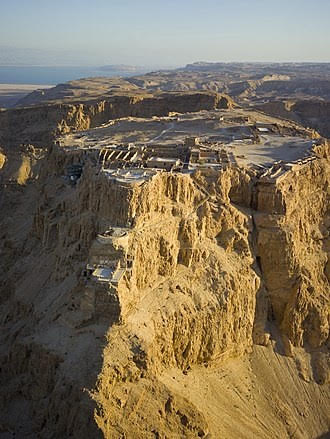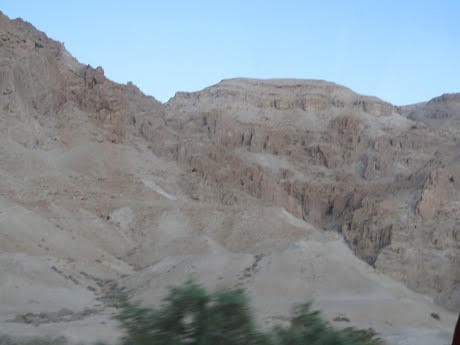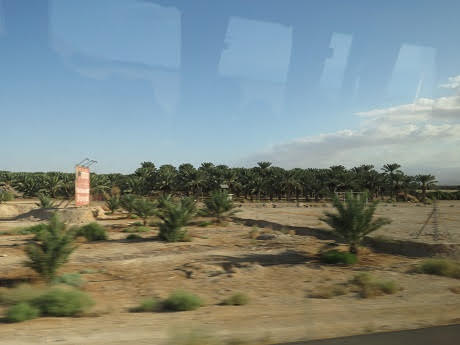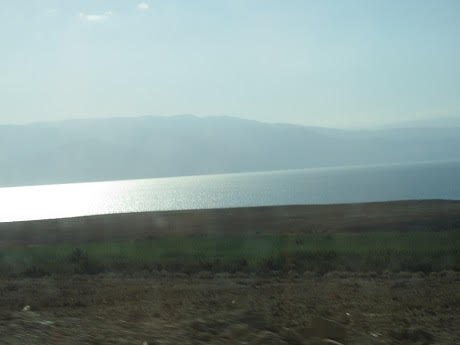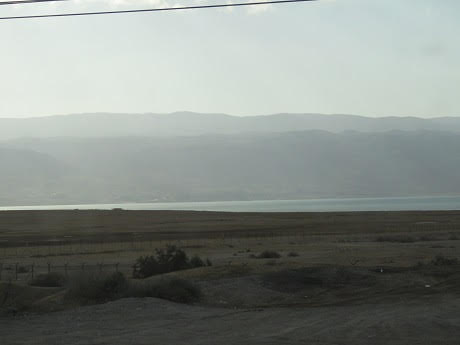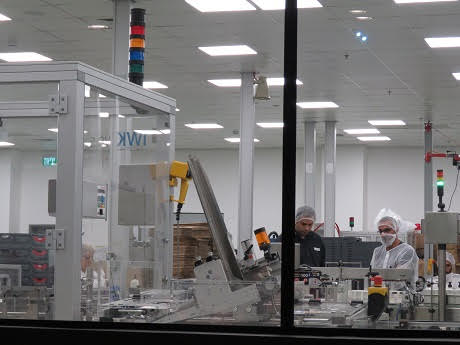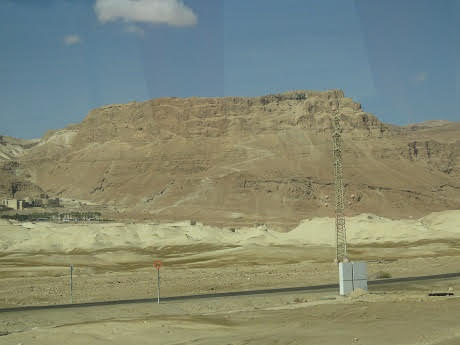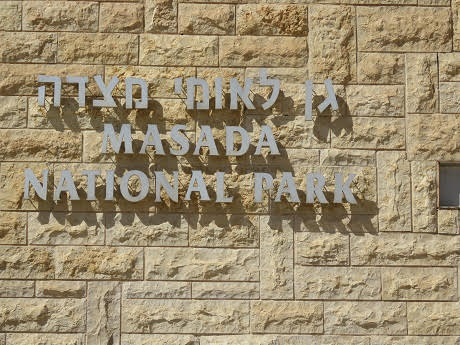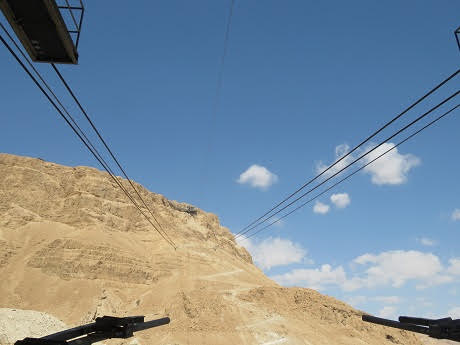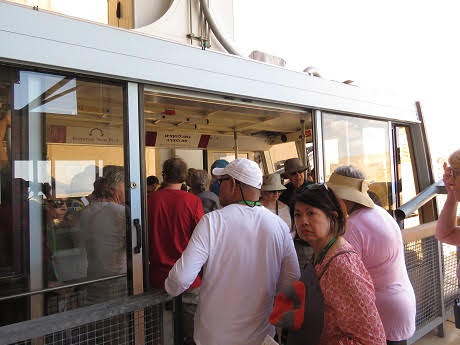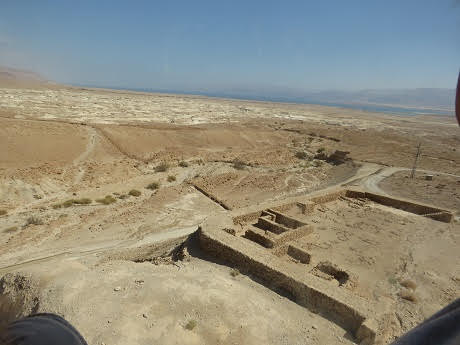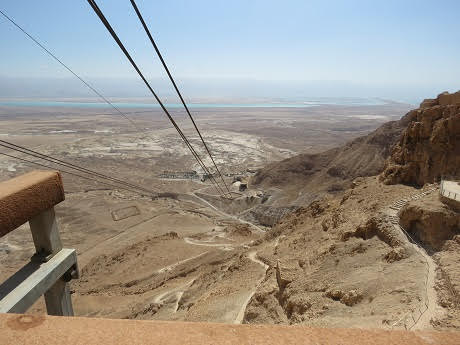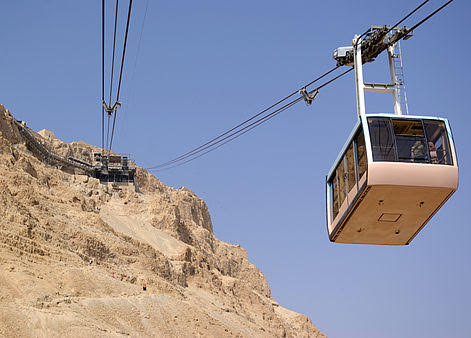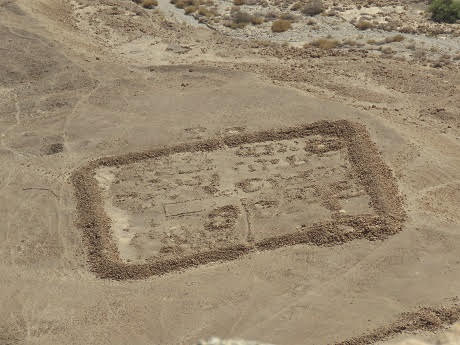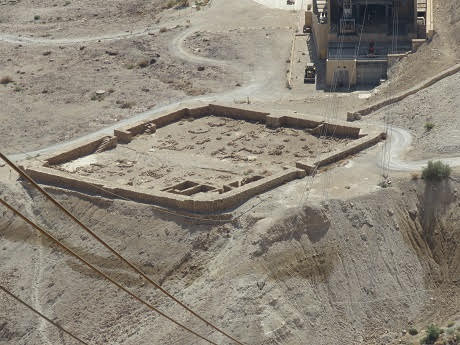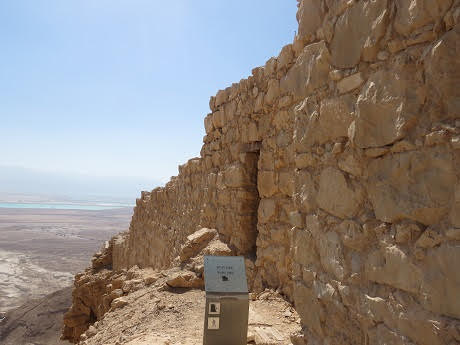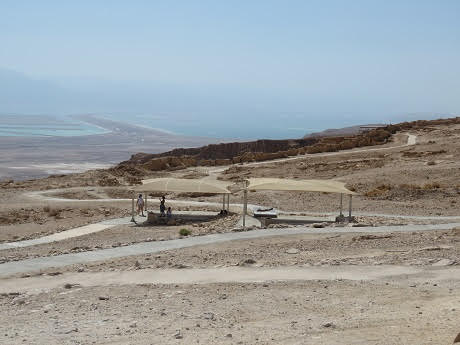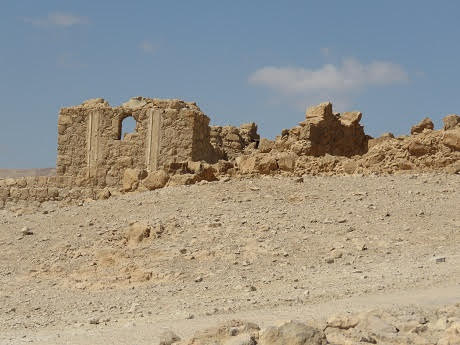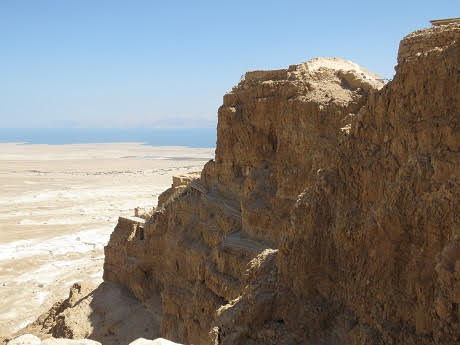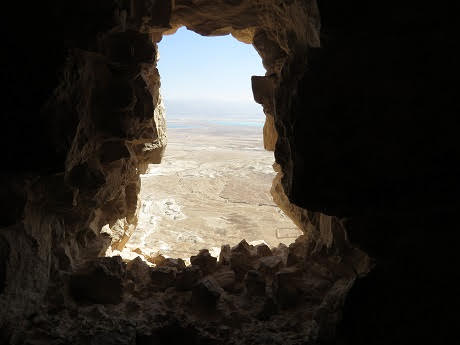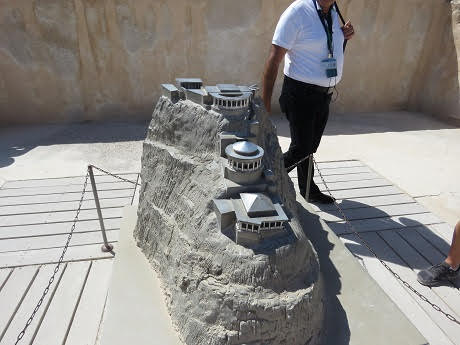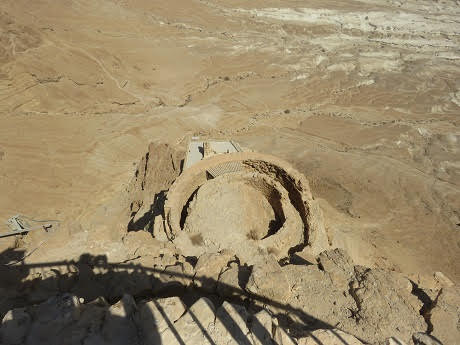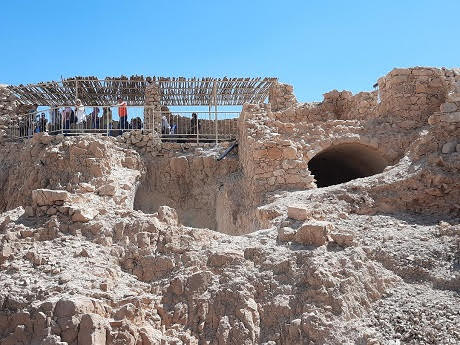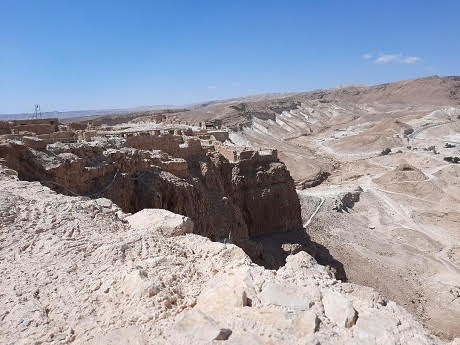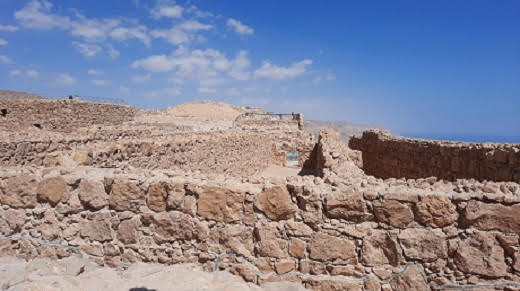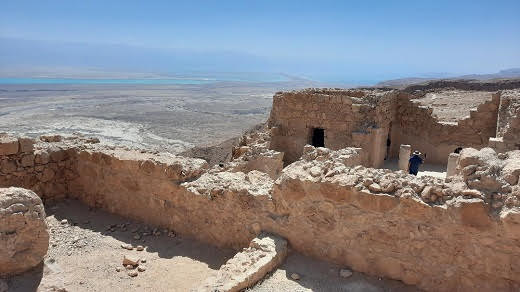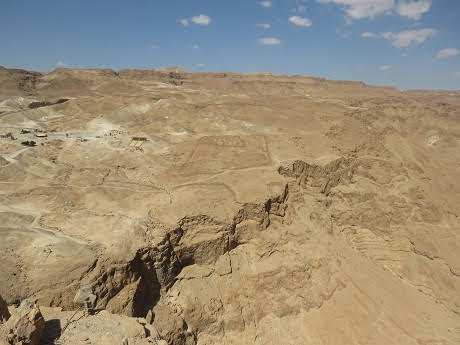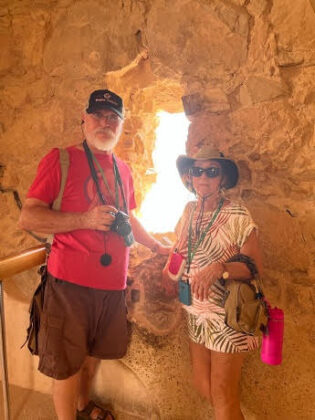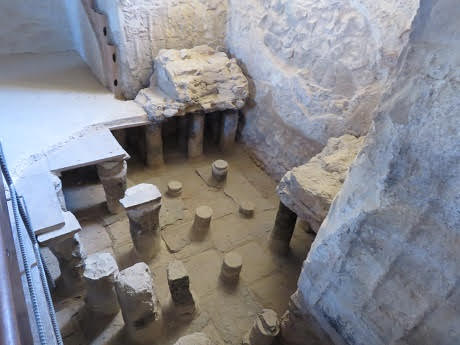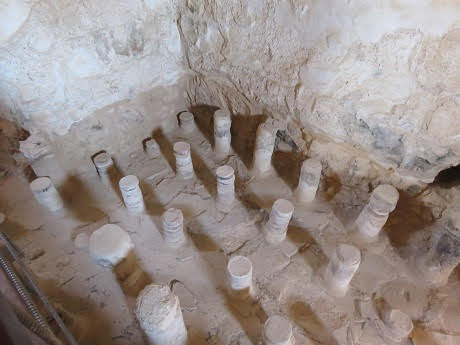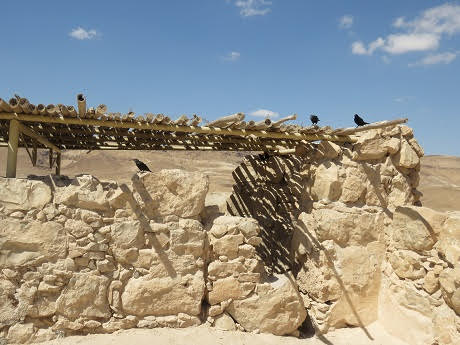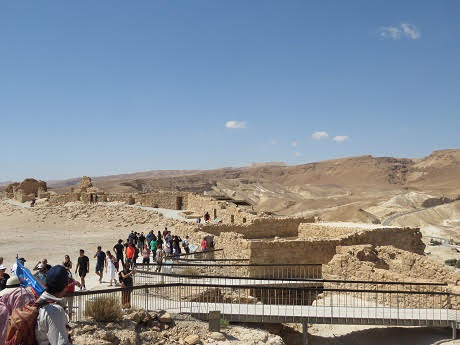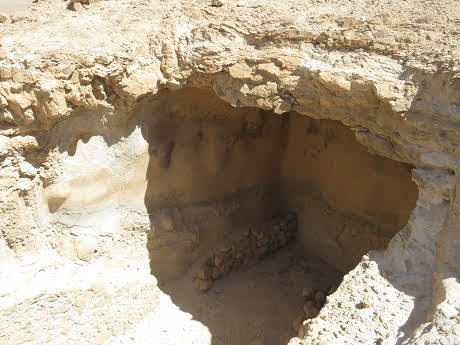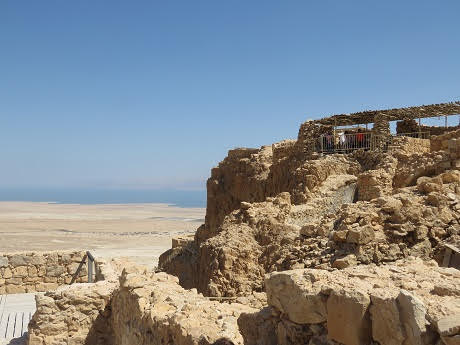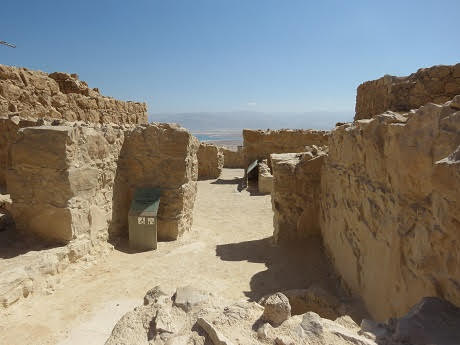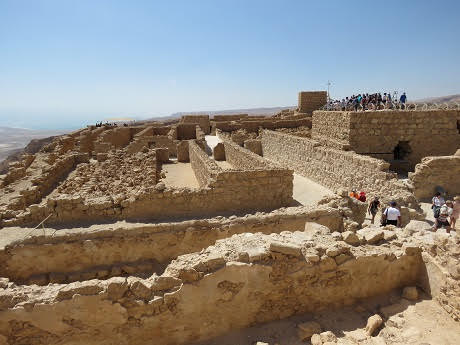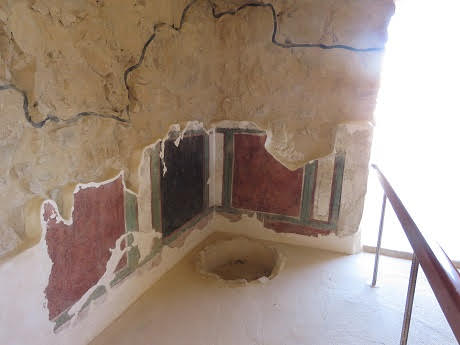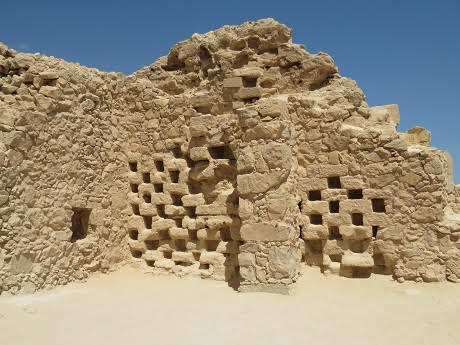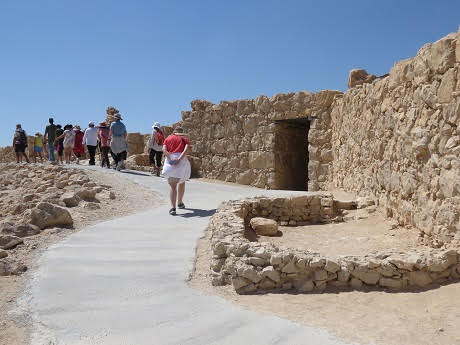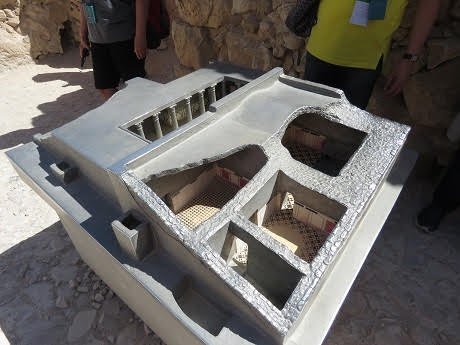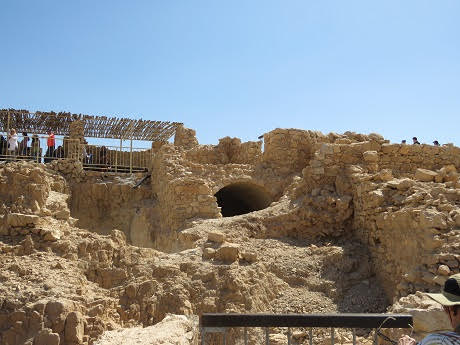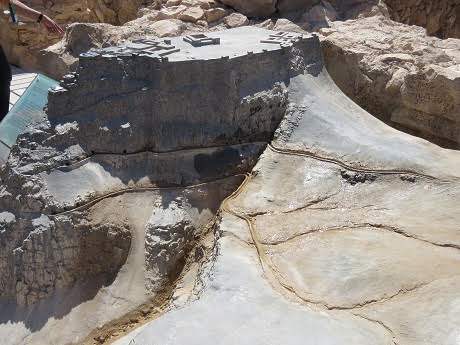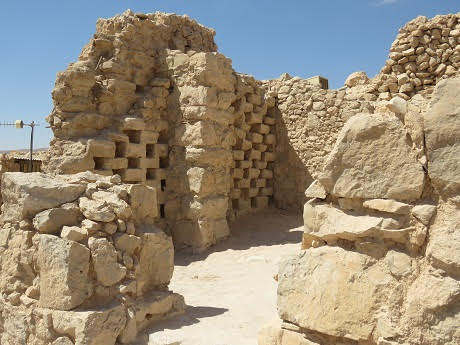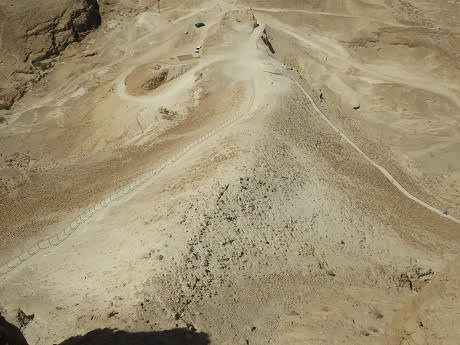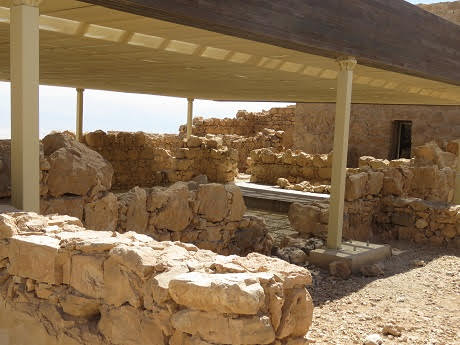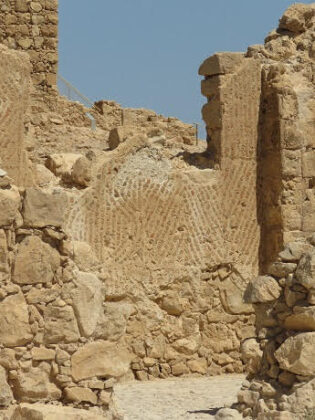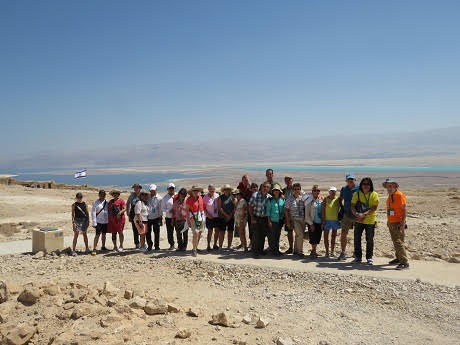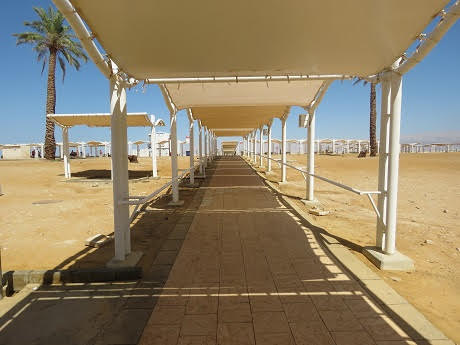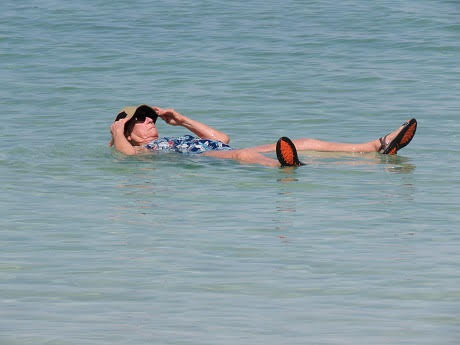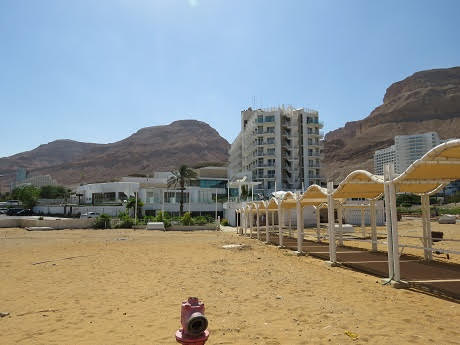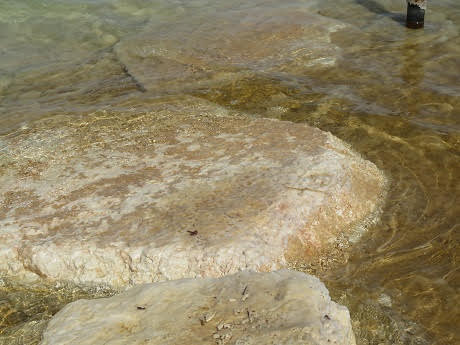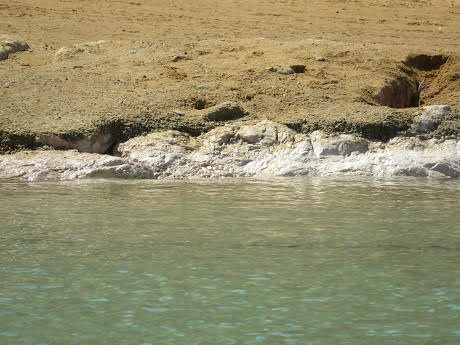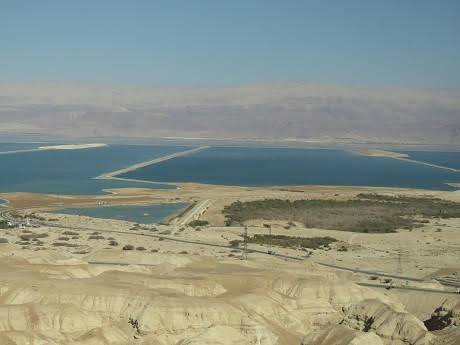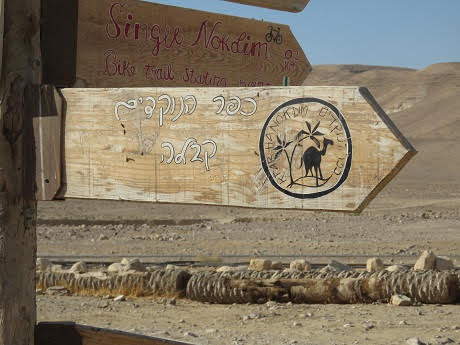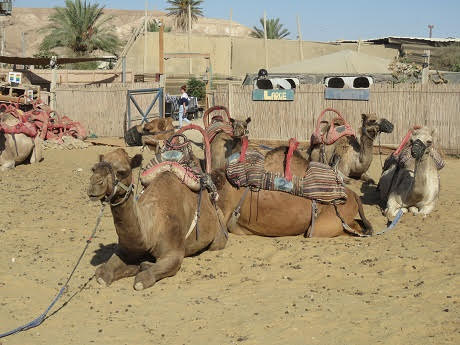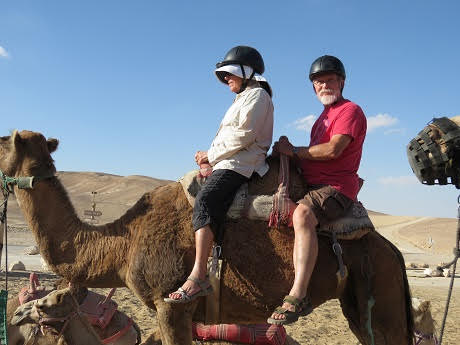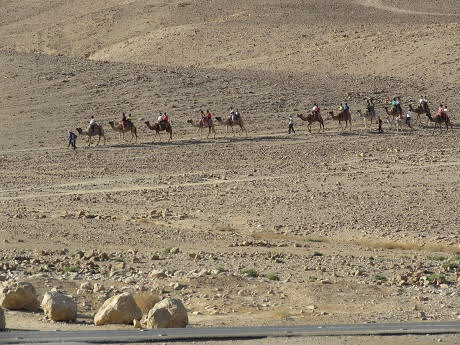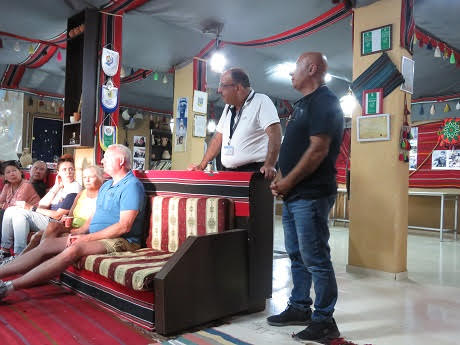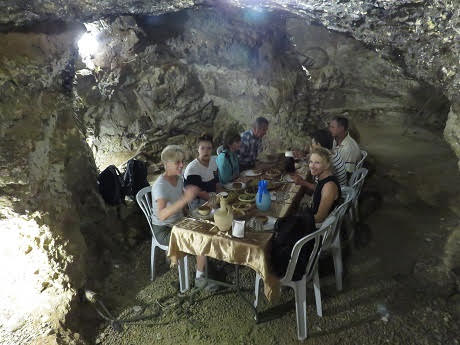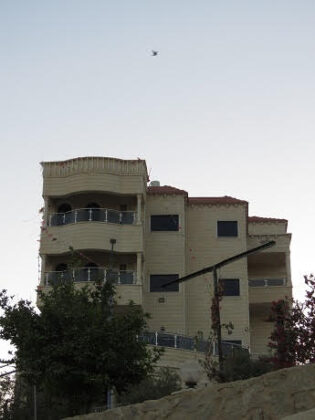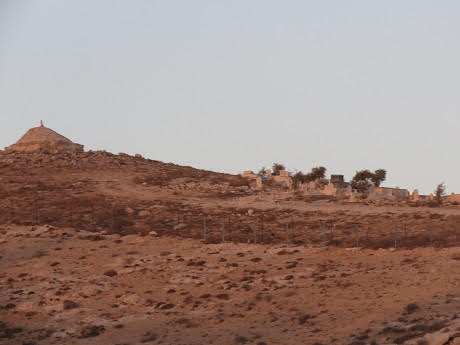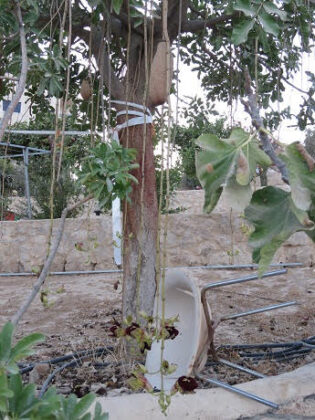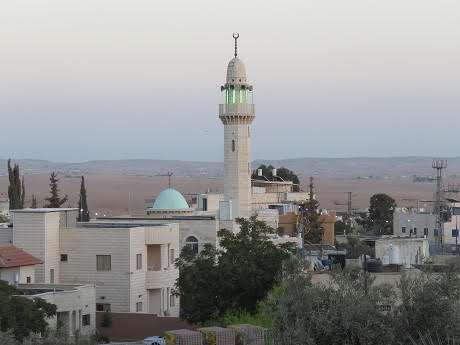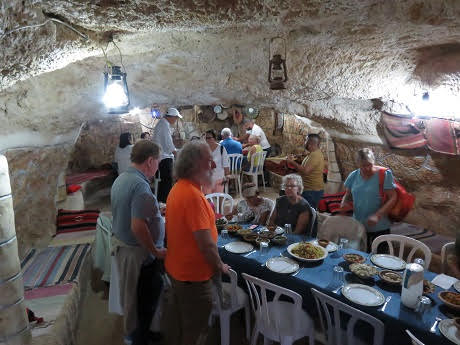The Dead Sea and Masada
By TR Robertson
After breakfast at our hotel in Jerusalem, the Lady Stern Hotel, our tour group boarded our tour bus for another full day of adventure in Israel. Today we would drive 21 miles on Road 1 to the Dead Sea followed by taking a cable car to the magical set of ruins called Masada. Jerusalem is 1,200 feet above sea level, and we would be traveling to the lowest point on the Earth, the Dead Sea – 1,412 feet below sea level. The one-hour trip took us by Bedouin camp sites and near one of the oldest cities in the world, Jericho, said to have existed 10,000 years ago. Jericho is at the northern tip of the Dead Sea. We were in the deserts of Israel, but they were different looking than the deserts in Egypt. Tan was the predominant color, but it was not loose sand, instead the rolling hills were a little harder packed, at least in the areas we were passing.
The Dead Sea is what remains of a much larger sea, called the Atlas Sea, existing millions of years ago. Tectonic plates have moved over time, raising and separating areas to form what we see today, the Jordan River Valley. The Dead Sea is receding at an alarming rate even though water from the Jordan River flows into the Dead Sea. Over time, salt and other minerals from the land have turned the Dead Sea’s salinity to 9.6 times that of the ocean. Another problem for the area is the formation of large sinkholes that have caused the closure of some hotels and other tourist sites. Historically, the Dead Sea is considered the world’s first health resort as King Herod lived here 2,000 years ago and knew of the healing properties of the sea. The Dead Sea currently is 9.3 miles wide at the widest point and the northern basin is 31 miles long. The deepest point of the Dead Sea is 997 feet deep.
Other than the ancient fortress of Masada, the other significant find at the Dead Sea area was the Dead Sea Scrolls. Over 5,000 ancient parchments have been found since they were first discovered in 1947. They were first found by chance when three Ta’amireh shepherds, who were tending their goats, were tossing stones in a cave opening high on the hills as they looked for a lost goat. This was near an ancient settlement called Qumran. They heard a sound of rocks shattering pottery. Climbing into the cave they found large, shattered jars that contained what would be deciphered as ancient texts of the Essenes that predate the Bible. We drove passed the area, located about one mile from the northwestern shores of the Dead Sea. The water would have been much closer to the caves in 1947. Exhibits of the Dead Sea Scrolls are on display at the Israel Museum.
Our first stop was to a large business called Ahava Dead Sea Mineral Skincare specializing in beauty products made from the minerals found in the Dead Sea. After a short video presentation about their products, the group was allowed to shop in their gift shop purchasing a variety of products ranging from facial, body, anti-aging creams, lotions, cleansers, moisturizers and more. Most in the group left with bags of Ahava products.
From this spot we continued down the Dead Sea Highway, running along the coastline of the Dead Sea, passing hotels and health and wellness facilities. We began to see the large rock plateau where Masada is located and the visitor center and cable car that runs to the top of Masada. Masada means fortress in Hebrew and was declared a UNESCO World Heritage Site in 2001. The Masada National Park was opened in 1966. The site became historically famous when stories began to circulate about the standoff between a Jewish group called the Sicarii, led by Eleazar ben Yair, and the Roman Legion, led by Lucius Flavius Silva, and the aftermath of the battles. The Sicarii rebel group had led a revolt in AD 66 against Roman rule. People had been living in Masada by the 2nd century BC. King Herod had fortified the rock plateau in 37-31 BC, building a palace sitting on three levels of the northern side of Masada.
The Sicarii would attack the Roman garrison at Masada sometime between AD 67-68, killing most in the garrison. The Sicarii were also known to attack Jewish communities that had willingly submitted to Roman rule without challenging or fighting to protect their communities. A Roman Legion was dispatched to take Masada back and Silva would wage war beginning in AD 73. For one year his legions attempted to scale the cliff walls, finally building a stone ramp on the western side of the plateau. Large wooden battle towers with battering rams were pushed up the ramp to allow the troops to scale the walls of Masada and attack the western side. But on the day they entered the top of Masada, no battle ensued as the Roman troops found 967 men, women, and children dead. The story says that 10 of the Sicarii drew lots to select who would be chosen to assist in helping their people commit mass suicide, then killing themselves, rather than submit to Roman rule. Most of this story is told through the writing of Flavius Josephus, a Jewish historian writing in AD 93. According to Josephus, Masada was the last of the rebel strongholds in Judea. He wrote of the suicides and said two women and several children survived by hiding in cisterns and told the story of what happened. Josephus also wrote about a long speech Eleazar Ben-Yair gave to the people before they decided dying would be better than their capture by the Romans. Excavations in the site have only revealed 28 skeletons, 3 family members in one house and 25 others in a cave. Some historians question the authenticity of Josephus stories, and no other documentation exists about the battle. Archeologists have discovered a number of Roman siege camp sites surrounding the area around Masada, showing a large army was in this area at one time. There is no doubt a war took place here. Exactly what happened on that fateful day when Masada fell may never be completely known, but many historians do believe the story Josephus wrote about the human sacrifice made rather than to give up their freedom.
Our bus pulled into the parking area, and we quickly joined the crowds of people heading into the visitor center as we waited for our guide to get tickets and a time for us to ride the cable car to the top. Prior to 1971 the only way to get to the top of Masada was to hike up Snake Pass, ride a donkey, or take the harder route up the Roman Ramp path. In 1971, the Karl Brandle Company of Switzerland built the first cable car system at the site. In 1998 the Von Roll Holding Company of Switzerland replaced this system. The existing cable cars hold 65 people each, although I felt like the cable car we were in had more people than that in the car. The cable cars rise 2,900 feet to the top of Masada.
At the top we followed a counterclockwise route to circle the top of the plateau. We first walked through the commandant’s residences which lead to the large storerooms built to house food and supplies for the residents. From here we walked to an overlook where we could see the distinct levels of what would have been King Herod’s Northern Palace. Moving on, our group walked into the large bathhouse, past the officer’s quarters and Synagogue. Our guide showed us the Columbarium Towers where pigeons were raised for food and the Byzantine Church with mosaic patterns on the walls and floor. This is also the point where we could look down on the Roman ramp that led to the breaching point on the Western wall. You could also see the remains of Roman camps as you looked down to the valley floor. We walked past the King Herod’s Western Palace, the largest structure at Masada. There were a number of large water cisterns scattered around Masada. There were also public immersion pools at various locations as well as smaller palace rooms under construction before the revolt. One area is referred to as rebel dwellings where a number of people lived away from the cliff walls of Masada during the siege. The Southern side of Masada consisted of rooms running along the cliff and a small fort at the extreme Southern point. We spent about an hour and a half walking through the various rooms and ruins of Masada before we returned to the cable car to take the quick trip back to the Visitor’s Center. This fascinating part of Jewish history, wrapped in mystery, was on my bucket list and did not disappoint. I especially liked the fact that unlike other places we had seen and would see, we were seeing the site exactly like it was found apart from almost 2,000 years of the passing of time. Unfortunately, we ran out of time and did not get a chance to go in the Masada Museum at the Visitors Center.
On the road again we headed to a Dead Sea Resort for lunch and a chance for many in our group to float in the Dead Sea. Those who chose to take part in this were given strict instructions about how to float, information about not getting any of the water in your eyes or do not swallow any of the water. It was also suggested to wear slippers as the salt build-up could cut your feet and getting the water in the cut would sting. Grabbing towels, off Carolyn and her cousin Barcy and friend Nancy went to take part in this experience. I chose to take photos and let them enjoy a float in the Dead Sea. It was suggested to only spend 20 minutes in the water, then to thoroughly wash off.
Leaving the hotel after the Dead Sea float, the bus drove us away from the Dead Sea for a short ride to experience the wonderful camel rides. This was my second and last time for a camel ride, the first-time riding to a Bedouin camp in Egypt. Camels are not comfortable animals to ride. This was a short caravan type ride on a trail in the Jordanian desert. Only a few in our group took part in this part of the tour.
Completing this activity, we boarded the bus again, this time to drive to a small village with nice homes of Bedouin peoples who have chosen to live in houses rather than nomadic camps. We heard from the leader of this village about their life in the village, how they are governed and then followed him to a cave that was once the home of his grandfather before the village was established. Our guide, Farah, interpreted the gentleman’s story as he spoke in his language, although we found out later, he spoke perfect English. The cave was sizable and set-up as a small dining area for groups like ours. Some of his sons and other members of the group brought in a nice dinner for our group. This was a great ending to another remarkably busy day in the Mid-East.
Part 5 will take you to the Kingdom of Jordan and the city of Amman as well as a tour of some of the world’s best-preserved ruins in Jerash and the experience of a Jordanian home cooked dinner.


